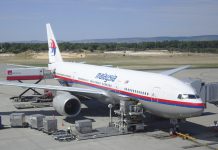A change in Qantas’s strategy is now in full flight as it returns to a raft of holiday routes and destinations it abandoned a decade ago after launching low-cost subsidiary Jetstar.
A two-year fare and capacity war that followed Virgin Australia’s decision to re-invent itself as a full-service carrier in January 2012 was just the beginning of the shake-out in Australia’s air travel business.
But unlike previous rationalisations, this one is intensifying competition, not reducing it.
There are now four airlines in two camps instead of just the two that existed last century as Qantas itself has finally begun the systematic cost reductions it had put on hold after the collapse of Ansett in September 2001.
That means Qantas is becoming more aggressive in both business and leisure markets as lower costs enable it to make money even on routes that exist mainly for people taking holidays.
Now, with both business and economy class and food included in the price of its tickets, Virgin had found itself with a full-service monopoly on holiday routes abandoned by Qantas and handed over to Jetstar.
But that is beginning to change. Qantas will base a Boeing 717 at Maroochydore from February 2016 to operate the first early morning service from the Sunshine Coast to Sydney, with an evening return.
In the meantime, from December 21, Qantas will start six flights a week from Sydney to Maroochydore at times friendly to holiday-makers during the Christmas-New Year break.
Qantas will reintroduce a daily service from Melbourne to the Gold Coast on October 25 and will increase services from Gold Coast to Sydney from three to four flights a day, including an early morning service.
It has already replaced Jetstar between Melbourne and Hamilton Island as Jetstar switches its focus to nearby Proserpine on the Whitsunday coast.
In perhaps the most symbolic change, Qantas announced last week that domestic 737s would be retasked to operate four weekly Qantas seasonal services from Sydney to Denpasar, Bali, from December 4 to January 29.
However, according to the man running the new strategy, it has nothing to do with the premium-service monopoly on some holiday routes which Qantas in effect gifted to Virgin Australia when Virgin went full-service in 2012.
“It wasn’t driven by that fact at all,” says Qantas Domestic chief executive Andrew David* in an exclusive interview with AirlineRatings.com.
“What drove it is that we had spent a lot of time understanding the needs of our customer across the group, both Qantas and Jetstar. That work, that deep insight of our customer’s needs then led us to look at our total network, literally route by route and, as you work through that analysis, you get a clear picture that, on a route like Melbourne to Coolangatta, there’s customer demand for business class and premium leisure, which is what the Qantas product is all about, and there’s also a high demand for price-sensitive leisure-driven travel.
“It’s very much about applying our dual-brand strategy, driven by our deep insight into our customer’s needs.”
That customer research created Qantas’s new Sunshine Coast-Sydney service, to cash in on the fact that 55 per cent of Sunshine Coast locals drive 140 kilometres to Brisbane airport rather than fly from Maroochydore because of the dearth of suitable schedules.
Council-owned Maroochydore airport was so concerned with the trend it launched a “Fly Local” campaign in June this year. That was one of the first stops for the Qantas marketing team.
“Part of building a business case is having discussions with the airports,” says David. “That’s part and parcel of deciding where you fly anywhere on the network.
“Where there’s enough demand, you can put on a direct service rather than channelling people through an airport like Brisbane. We’ve analysed this and we believe there’s good demand there for a Qantas service out of Maroochydore to Sydney.”
The result is the first deployment of one of Qantas’s soon-to-be-20 110-seat Boeing 717s on an east coast leisure route. Until now, the 717s, apart from services to mining centres in Western Australia and Queensland and flights from Darwin and the Red Centre, have been used mainly for business services from Canberra and Hobart.
*Andrew David is a former chief operating officer at Virgin Australia and former executive director at Jetstar Japan. His last job was running Tigerair Australia before it was taken over by Virgin























